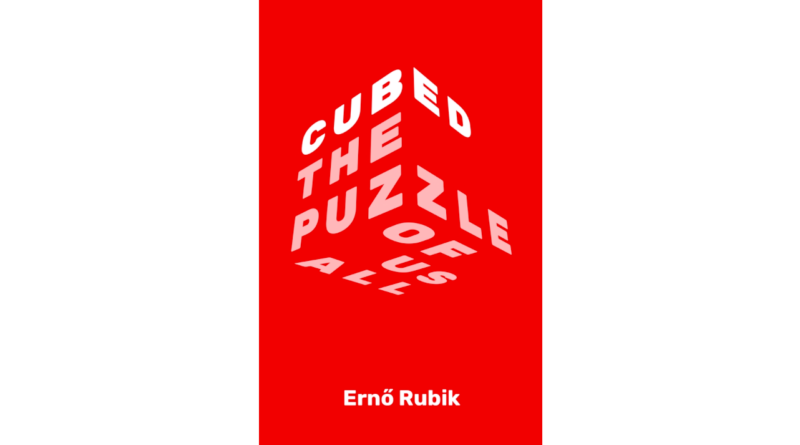REVIEW: ‘Cubed: The Puzzle of Us All’ by Erno Rubik
Image courtesy of Flatiron Books / Provided by official site.
Erno Rubik, the inventor of the wildly popular and game-changing Rubik’s Cube, has written an enthralling and nontraditional rumination on the puzzle that has captured the minds of problem-solvers all over the world. Rather than offering a chronological retelling of his life and how the cube came to be, Rubik decides to offer some philosophical thoughts on the nature of puzzles, the power of architecture, the wonderful oddities of Cube culture and the intricacies of the human condition.
The main DNA of the book, which is a quick read that runs less than 200 pages, is Rubik’s invention, and, to be sure, he goes over the chapter headings of how he developed the Cube in the 1970s, how it became a “craze” in the 1980s and how it found a second, more gradual ascent as a “toy” that continues to impress.
Throughout the book Rubik likes to remind the reader that he’s not much of a writer. The constant references to his perceived inability to put together a sentence is a bit frustrating — one because it’s unnecessary and two because it feels unreal. He’s actually quite a good writer, and his thoughts are like little rabbit holes that lead to further exploration of how and why humans do what they do. On occasion his ruminating meanders, but even then, it’s all interesting and intricate, not too unlike the Cube itself.
By the way, the Cube plays a character as well. In addition to writing the prologue from the Cube’s perspective, there’s also a hilarious, if somewhat out of place, interview that finishes the book between Rubik and the Cube. Throughout these pages, the Hungarian author/inventor holds his molded clay at arm’s length, not fully understanding its worldwide appeal but also appreciating its simple complexity (or complex simplicity). He describes some of the algorithms and architectural ideas behind the Cube, differentiating the cross from the edges from the corners, describing the chosen color scheme and cluing the reader into how the entire contraption works. But his deeper thoughts are on the usability of the Cube — how it appeals to both young and old, how it crosses languages and cultures, how it has spawned world-record attempts and international competitions to be the fastest cuber around (“speedcubing”). Honestly, readers should do themselves a favor and Google “speedcubing.” The results will take less than 10 seconds to watch.
As Rubik dives deep into these iconic squares, he never diminishes the wonders of the Cube itself. It’s not like the reader walks away from Cubed thinking it would have been better to keep the secrets secret. This is no wizard behind the curtain. As Rubik describes and contextualizes his invention, the fascination only grows richer and more puzzling.
The final third of the book delves into the cultural impact of the Cube in recent years, and there are some asides about the inventor’s personal life: his building of houses, his dislike of fame, his attendance at championship cubing bouts.
Cubed is a must-read for anyone who loves the Rubik’s Cube, anyone who has actually “beat” the puzzle and even anyone who has attempted and frustratingly threw it across the room (this reviewer falls into this latter camp). As the subtitle of the book suggests, the book is less about a toy puzzle developed in the 1970s and more about “us,” the ones who have been puzzled by it for nearly 50 years.
By John Soltes / Publisher / John@HollywoodSoapbox.com
Cubed: The Puzzle of Us All by Erno Rubik. Flatiron Books. 208 pages. $13.99. Click here for more information.

